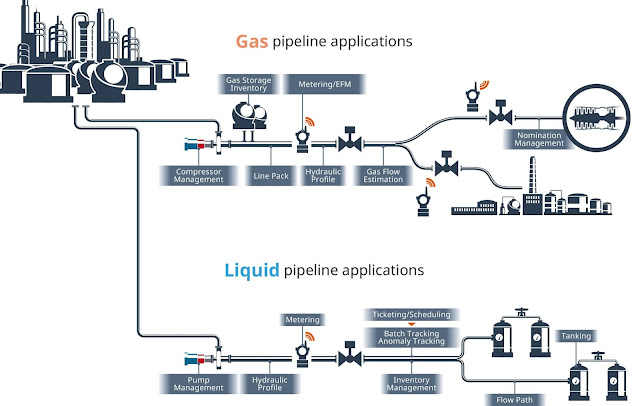KNOW THE DIFFERENCE
For those who don't like to read, here's the video:
In this new era that is ushering in the 4th industrial revolution, almost every organization is seeking to adopt “Digital Transformation”. But today’s world is filled with fake transformation projects. A mere technology upgrade or change management do not account for authentic transformation. Organizations and leaders both in the public and private sector have been caught unaware with the “delusion of digital transformation”. Many of the projects that CEOs and other leaders undertake are akin to moving from traditional systems to paperless office or shifting from legacy to cloud infrastructure. They are victims of this grand delusion and will eventually lead their organizations to an early grave.
Digital Transformation (DT or DX) is the adoption of digital
technology to transform services or businesses, through replacing non-digital
or manual processes with digital processes or replacing older digital
technology with newer digital technology. Digital solutions may enable - in
addition to efficiency via automation - new types of innovation and creativity,
rather than simply enhancing and supporting traditional methods. (Source: https://en.wikipedia.org/wiki/Digital_transformation)
Digital Transformation is
application of digital capabilities to processes, products, and assets to
improve efficiency, enhance customer value, manage risk, and uncover new
monetization opportunities. (Source: https://www.cio.com/article/3199030/what-is-digital-transformation.html)
Researchers have analyzed some
digital transformation strategy examples and trends of recent years.
Eventually, some of the key
predictions were:
· By 2023, investments in digital transformation will grow from 36% in 2019 to over 50% of all information and communication technology investments.
· Investments in direct digital transformations are rapidly growing at an annual rate of 17.5%. They’re expected to approach $7.4 trillion over 2020-2023.
· By 2024, artificial intelligence-powered companies will respond to their customers and partners 50% faster than their peers.
(Source: IDC
FutureScape: Worldwide Digital Transformation 2020 Predictions, October 2019)
The idea is to create whole new
products, services or business models, not just improve old ones. Companies
that go through digital transformation are said to be more agile, customer
centric and data driven. DX can have different blueprints depending upon the
company and industry. But, in all cases it needs to follow these basic steps:
In terms of the People-Process-Technology
framework, a definite “cultural shift” is a prerogative to achieve DX in its
truest sense. Businesses must learn to push boundaries, experiment, and accept
the associated failures. This potentially involves abandoning well-established
processes for new ones – ones that are often still being defined.
For real DX, one needs to separate from the herd involved in
FX.
Look at the chart given below:
It doesn’t matter if you find yourself in quadrant one, but
never stray from the course that turns out to be an FX instead of genuine DX. A
few good examples of DX are given below for you to understand and get inspired:
Anheuser-Busch (AB) InBev has looked at how digital
transformation can be applied all through the business while retaining focus on
serving its consumers. They have achieved it via the following –
· Developed a mobile application called B2B with an inbuilt algorithm that makes specific replenishment suggestions, creating opportunities for sales staff to talk about new brands and products with store owners.
· Created a tech innovation lab, Beer Garage, to explore ways that artificial intelligence (AI), machine learning (ML) and the internet of things (IoT), among other technologies can be used to improve experiences for consumers and retailers alike.
DHL is well known for its excellent stock management and
supply chain but that did not stop them from improving. Their stock management
and supply chain systems are easy to use and automated, but they want to take
things to the next level. For this they decided to team up with Ricoh and
Ubimax and –
· Developed application for smart glasses. By pairing smart glasses with these applications, it can be used for reading bar codes, streamline pickup and drop off and reduce the chances of errors. Their stock price doubled from 20 euros in 2016 to 40 euros in 2018.
Honeywell has helped many companies improve their digital
presence and capabilities. In 2016 the company began transforming itself
digitally by introducing new technologies like data-centric, internet-connected,
offerings and devices. They have leveraged digital solutions like this –
· Using new digitized internal solutions and customer data, the company now offers its customers more technology solutions and has reinvented its industrial process control. As a result, in the past four years, Honeywell’s stock per share price has gone from $95 to $174.
As a leader what you must be doing is listed below:
· Develop competency – Invest in talent and upgrading skills of employees in the organization. Digital and analytics skills are very critical for DX and go a long way in bringing about real transformation.
· Plan and prioritize – Assess the current scenario and develop a roadmap. An efficient plan makes a solid foundation for any achievement. Pick relevant themes and prepare a business case.
· Commitment – Absolute commitment along with appropriate investment is crucial to bring about DX. Always look at the tangible as well as intangible benefits of the project.
A snapshot for a typical CDO is provided below:
Hence, the message is to steer clear of all types of fake
transformation projects and drive real digital transformation projects that
truly alter the arena. I can conclude this article with an allegorical anecdote:
|
Resume statement (DX) |
Reality (FX) |
|
Surpassed targets by 60% through implementing energy
saving initiatives and loss prevention strategies via leading digital
transformation projects across the organization, thereby contributing to the
bottom line of the company. |
Note: This blog including all articles are copyrighted by the author. Wherever, external content is used, the relevant sources are posted in separate links or the images itself.






























